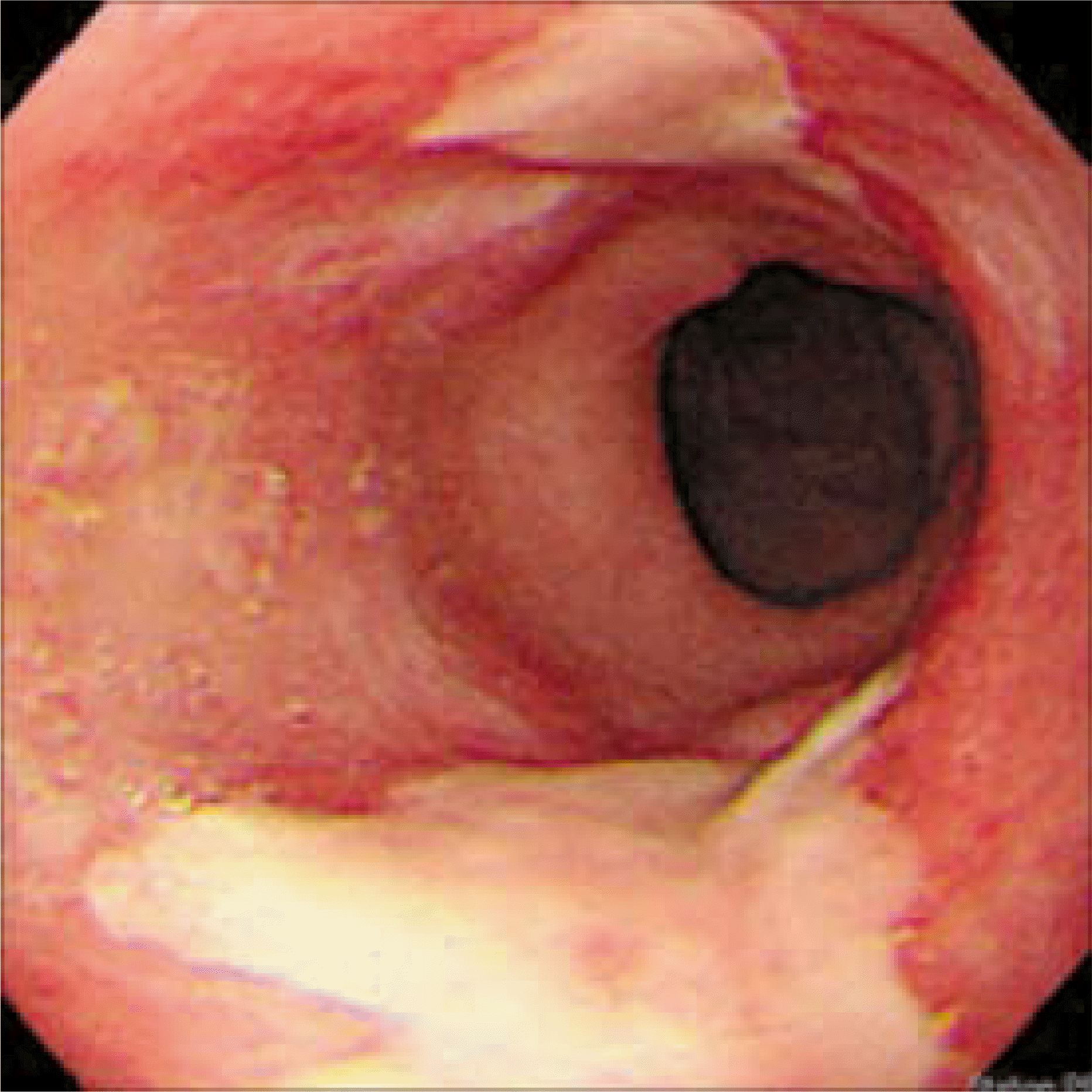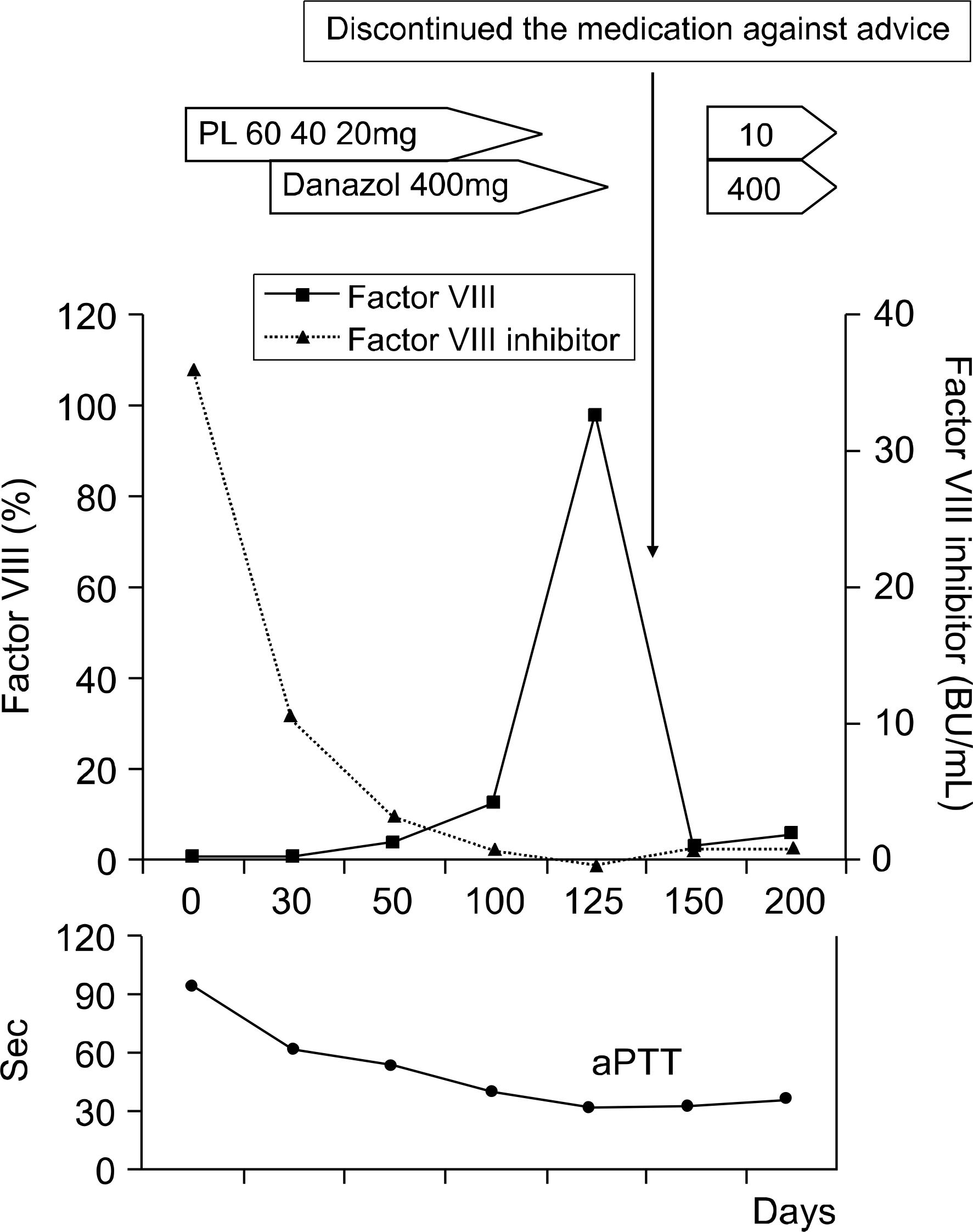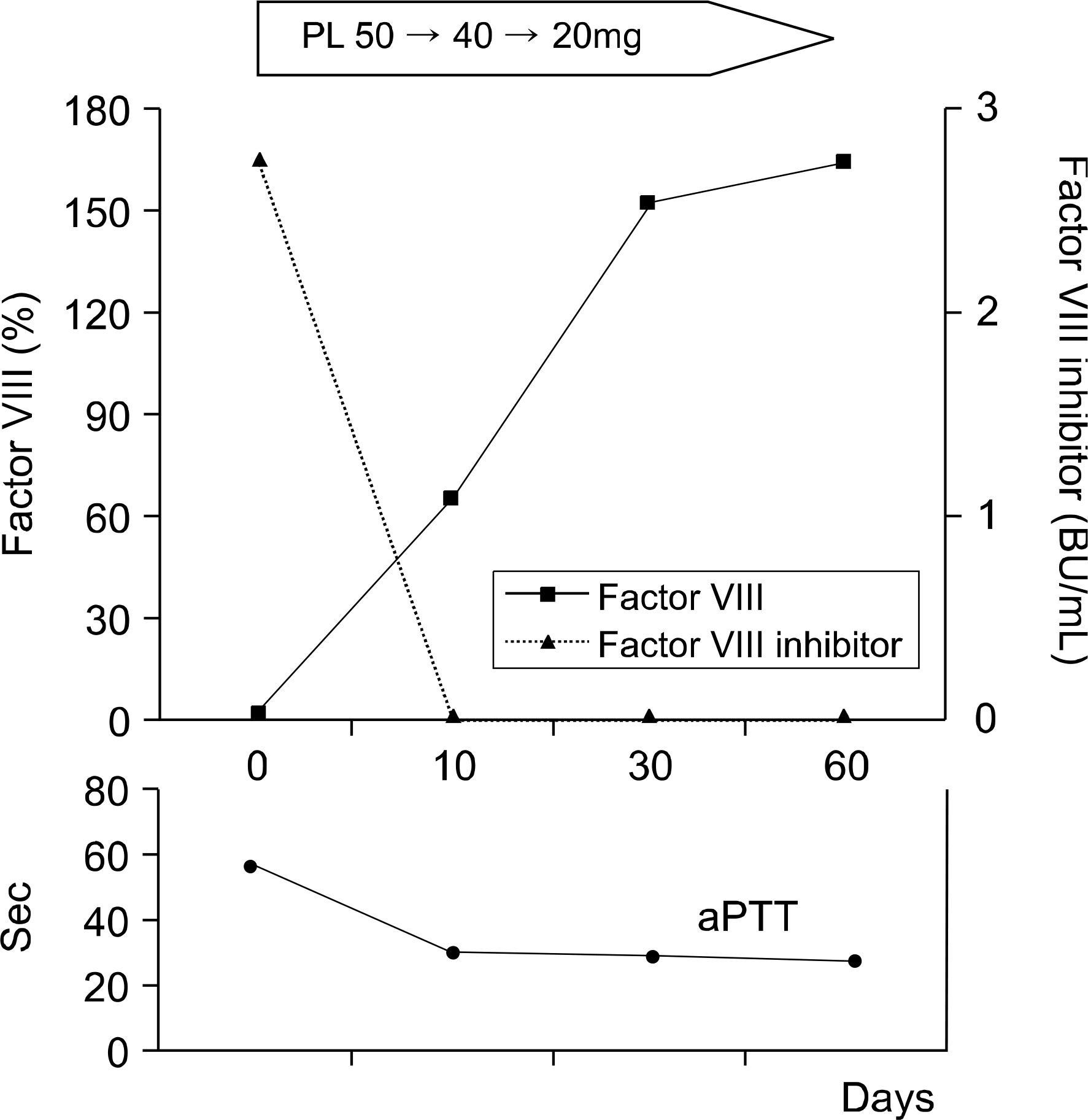Abstract
Acquired Hemophilia A is a rare and considerably life-threatening coagulopathy, which is caused by the development of autoantibodies against factor VIII (FVIII) in non-hemophilic adults. Acquired FVIII inhibitors can be associated with diverse conditions, such as malignant disorders, medications, autoimmune diseases, postpartum states and others. These autoantibodies inhibit normal coagulation, had results in bleeding complications, which can contribute to mortality in a high percentages of cases. Effective control of the disorder can be achieved by prompt diagnosis and appropriate managements. Generally, the managements of acquired hemophilia A are aimed at treating the acute bleeding and eliminating inhibitors by immunosuppression. Although a range of treatment options exists for patients with acquired hemophilia A, there is no consensus with regard to the optimal therapies for this disorder. Herein, two cases, an 82-year-old man and a 78-year-old man who were successfully treated by steroid or danazol, which is a relatively mild immunosuppressive agent, are reported.
Go to : 
REFERENCES
1). Kessler CM. An introduction to factor VIII inhibitors: the detection and quantitation. Am J Med. 1991; 91:1S–5S.

3). Grunewald M, Beneke H, Guthner C, Germowitz A, Brommer A, Griesshammer M. Acquired haemophilia: experiences with a standardized approach. Haemophilia. 2001; 7:164–9.
4). Shaffer LG, Phillips MD. Successful treatment of acquired hemophilia with oral immunosuppressive therapy. Ann Intern Med. 1997; 127:206–9.

5). Bayer RL, Lichtman SM, Allen SL, et al. Acquired factor VIII inhibitors-successful treatment with an oral outpatient regimen. Am J Hematol. 1999; 60:70–1.

6). Ali R, Ozcelik T, Ozkalemkas F, et al. Successful treatment of acquired haemophilia with prednisolone therapy. Hemophilia. 2003; 9:741–3.

7). Lee JJ, Chung IJ, Park MR, et al. Acquired hemophilia successfully treated with oral immunosuppressive therapy. Korean J Intern Med. 2003; 15:135–7.

8). Cho IH, Choul KJ, Park JS, et al. Use of recombinant factor VIIa in acquired hemophilia A patient with active bleeding. Korean J Thromb Hemost. 2000; 7:57–81.
9). Jung SW, Kim S, Youk CM, Park KC, Oh D, Byun JH. A case of asymptomatic acquired hemophilia. Korean J Thromb Hemost. 2001; 8:59–62.
10). Gralnick HR, Maisonneuve P, Sultan Y, Rick ME. Benefits of danazol treatment in patients with hemo-phila A (classic hemophilia). JAMA. 1985; 253:1151–3.
11). Gralnick HR, Rick ME. Danazol increases factor VIII and factor IX in classic hemophilia and Christmas disease. N Engl J Med. 1983; 308:1393–5.

12). Lozner EL, Jolliffe LS, Taylor FHL. Haemorrhagic diathesis with prolonged coagulation time associated with a circulating anticoagulant. Am J Med Sci. 1940; 199:318–27.
13). Hultin MB. Acquired inhibitors in malignant and nonmalignant disease state. Am J Med. 1991; 91:9S–13S.
14). Delgado J, Jimenez-Yuste V, Hernandez-Navarro F, Villar A. Acquired haemophilia: review and meta-analysis focused on therapy and prognostic factors. Br J Haematol. 2003; 121:21–35.

15). Green D. Immunosuppression of patients with acquired factor VIII inhibitors. Semin Hematol. 1994; 31:60–1.
16). Saxena R, Mishra DK, Kashyap R, Choudhry VP, Mahapatra M, Bhargava M. Acquired haemophilia-a study of ten cases. Haemophilia. 2000; 6:78–83.
17). Schreiber AD, Chien P, Tomaski A, Cines DB. Effect of danazol in immune thrombocytopenic purpura. N Engl J Med. 1987; 316:503–8.

Go to : 
 | Fig. 1.Multiple petechiae were shown at bilateral upper (A) and lower extremities (B) in case 1 patient. |
 | Fig. 2.Markedly elevated geographic ulcerations were shown at distal esophagus on esophagogastroduodenoscopy in case 1 patient. |




 PDF
PDF ePub
ePub Citation
Citation Print
Print




 XML Download
XML Download